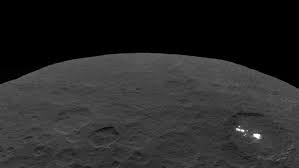
Breaking News
 Rule by Thieves: The Police State Becomes a Pay-to-Play Shadow Government
Rule by Thieves: The Police State Becomes a Pay-to-Play Shadow Government
 What Has Bitcoin Become 17 Years After Satoshi Nakamoto Published The Whitepaper?
What Has Bitcoin Become 17 Years After Satoshi Nakamoto Published The Whitepaper?
 These Are The World's Most Militarized Economies
These Are The World's Most Militarized Economies
Top Tech News
 Japan just injected artificial blood into a human. No blood type needed. No refrigeration.
Japan just injected artificial blood into a human. No blood type needed. No refrigeration.
 The 6 Best LLM Tools To Run Models Locally
The 6 Best LLM Tools To Run Models Locally
 Testing My First Sodium-Ion Solar Battery
Testing My First Sodium-Ion Solar Battery
 A man once paralyzed from the waist down now stands on his own, not with machines or wires,...
A man once paralyzed from the waist down now stands on his own, not with machines or wires,...
 Review: Thumb-sized thermal camera turns your phone into a smart tool
Review: Thumb-sized thermal camera turns your phone into a smart tool
 Army To Bring Nuclear Microreactors To Its Bases By 2028
Army To Bring Nuclear Microreactors To Its Bases By 2028
 Nissan Says It's On Track For Solid-State Batteries That Double EV Range By 2028
Nissan Says It's On Track For Solid-State Batteries That Double EV Range By 2028
 Carbon based computers that run on iron
Carbon based computers that run on iron
 Russia flies strategic cruise missile propelled by a nuclear engine
Russia flies strategic cruise missile propelled by a nuclear engine
 100% Free AC & Heat from SOLAR! Airspool Mini Split AC from Santan Solar | Unboxing & Install
100% Free AC & Heat from SOLAR! Airspool Mini Split AC from Santan Solar | Unboxing & Install
Sun sets on Dawn spacecraft's asteroid belt mission

Having eliminated other possibilities, the Dawn team has concluded that the unmanned spacecraft has finally run out of the hydrazine propellant needed to point its radio antenna at the Earth and its solar panels at the Sun.
The Dawn probe is currently about 257 million mi (414 million km) from Earth in orbit around the dwarf planet Ceres, the largest and most massive body in the asteroid belt between Mars and Jupiter. NASA says that the now derelict spacecraft is following strict protocols to protect the unusual chemistry of Ceres and is expected to remain in orbit for at least 20 years, with a 99 percent chance that it will still be in orbit in 50 years.
Dawn was launched on July 7, 2007 at 7:34 am EDT from pad 17B at the Cape Canaveral Air Force Station on a Delta 7925-H rocket. Once the probe reached escape velocity, its three ion thrusters used xenon propellant to accelerate it to the velocity required to reach the asteroid belt. The then state-of-the-art thrusters worked by electrically charging xenon atoms and then propelling them aft to generate thrust. This thrust wasn't much – only about 90 mN, or about that generated by the weight of a sheet of paper – but the engines could fire for weeks or even months at a time to build up a surprising head of speed across 4.3 billion mi (6.9 billion km) of space.
In 2011, Dawn went into orbit around the dwarf planet Vesta, the second largest body in the asteroid belt. This was the first time a probe had achieved orbit around an object in the belt, but Dawn scored an even bigger first when it left Vesta under power and proceeded to Ceres, which it orbited in 2015. This was not only the first visit to Ceres, but also the first time a spacecraft had gone from Earth to another body, then left that body to go on to orbit a third.

 Known vs Unknown
Known vs Unknown

